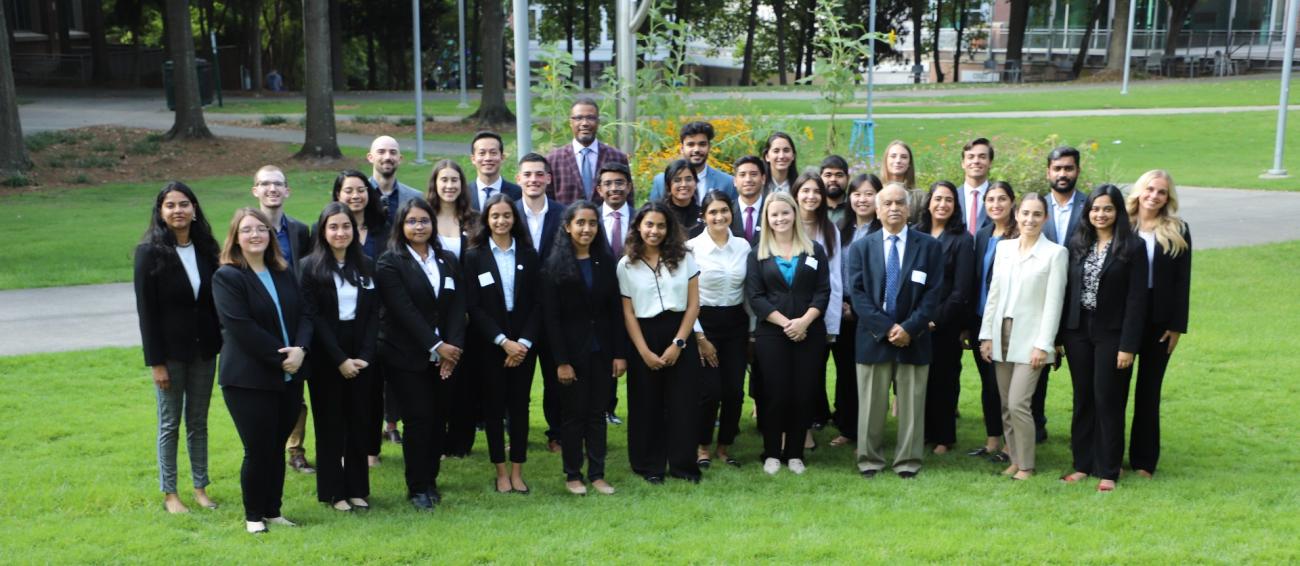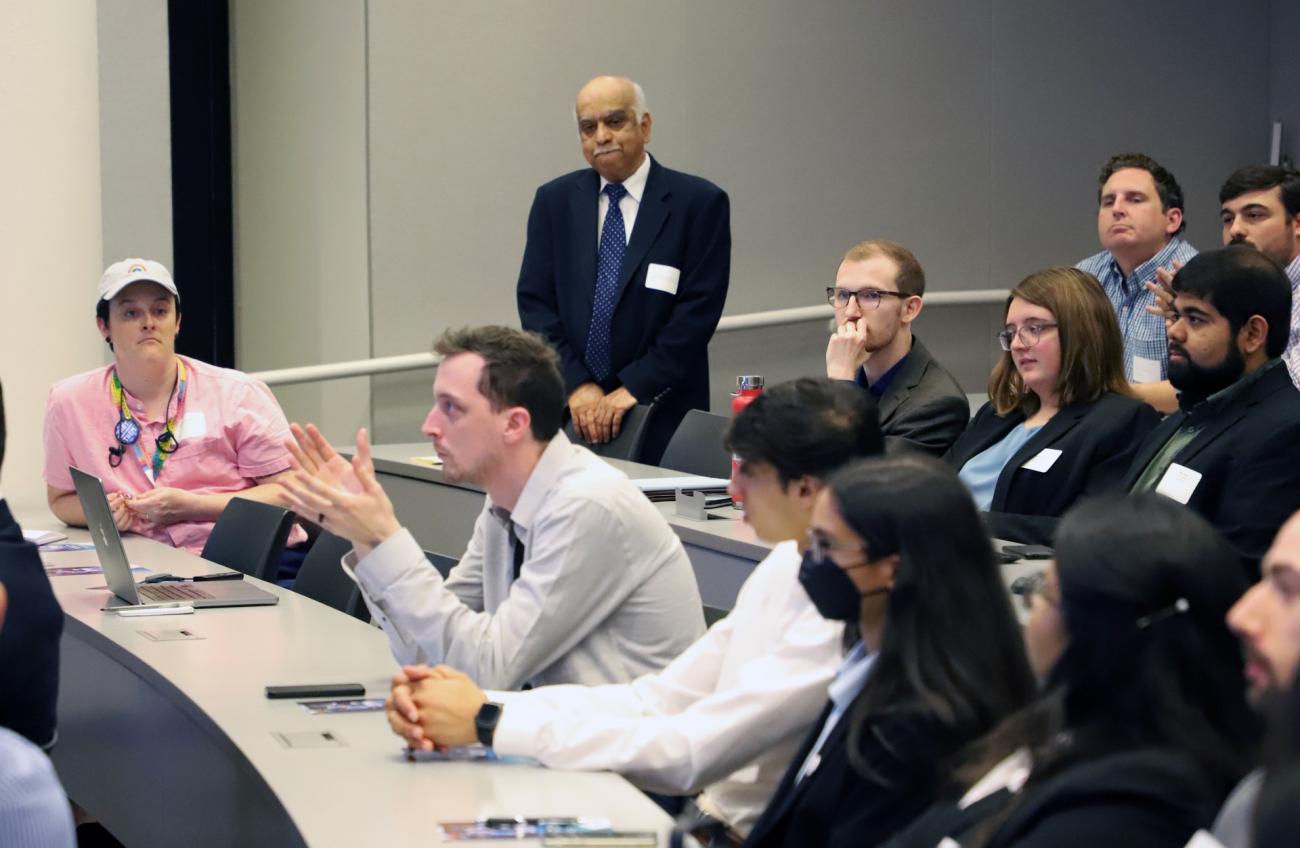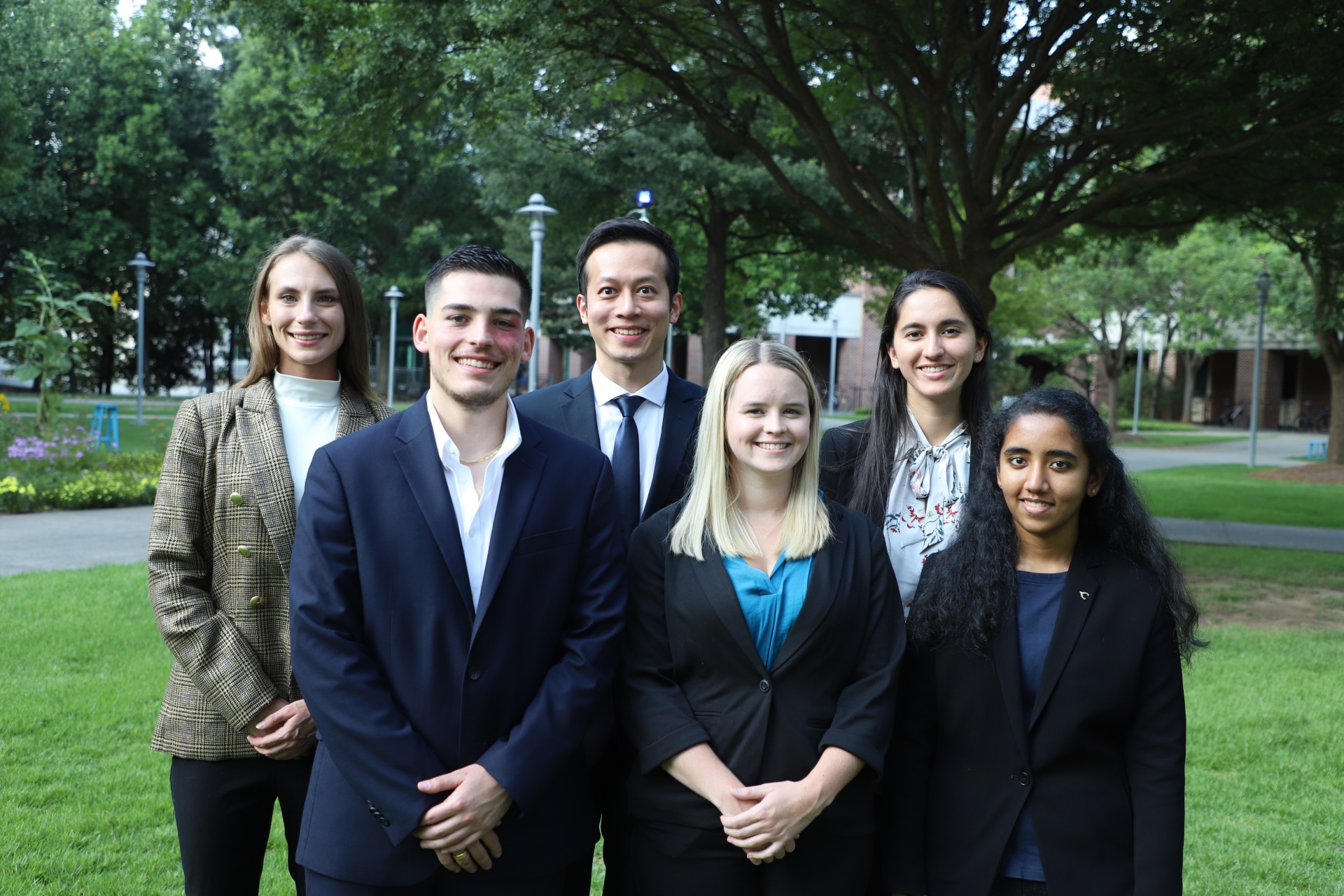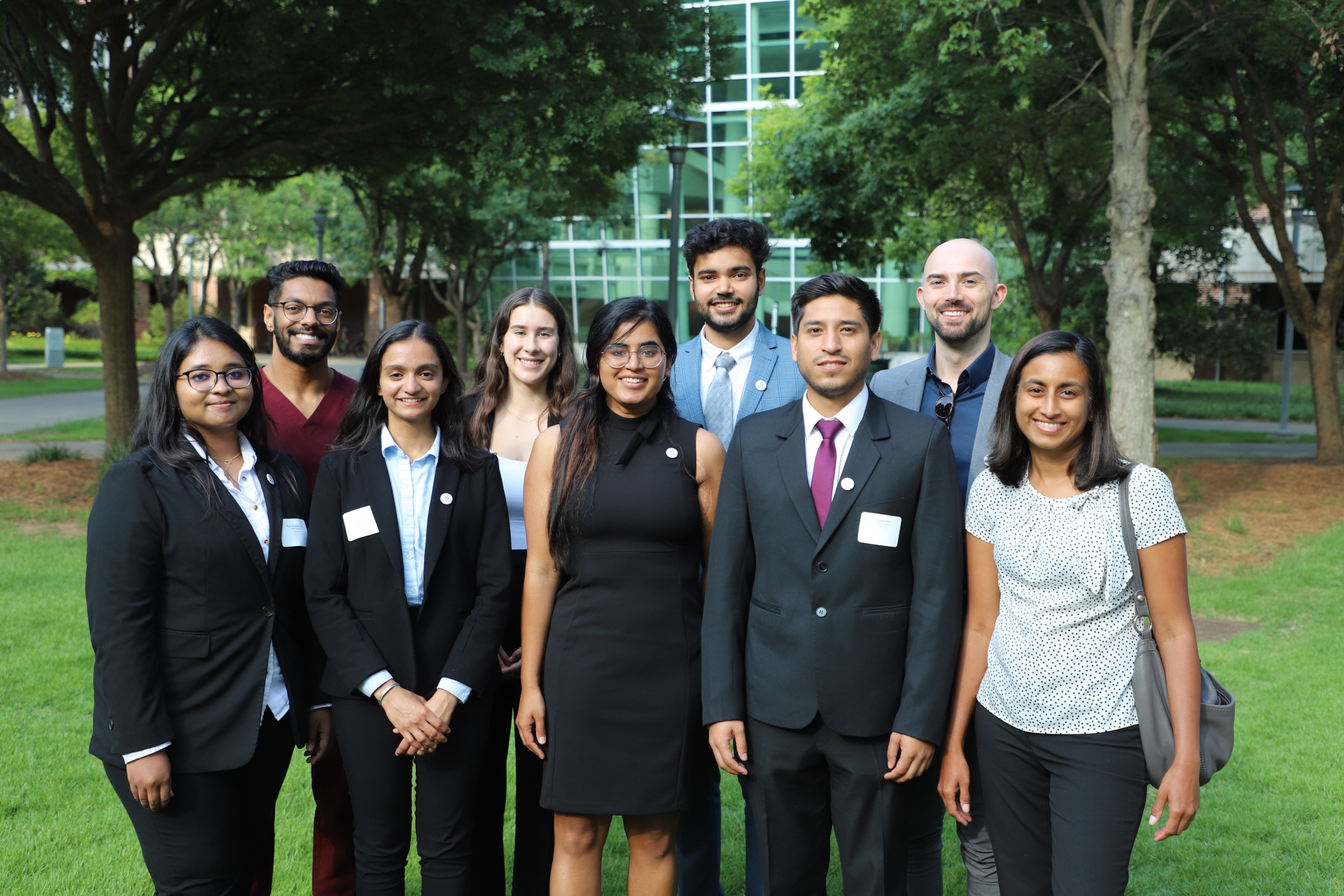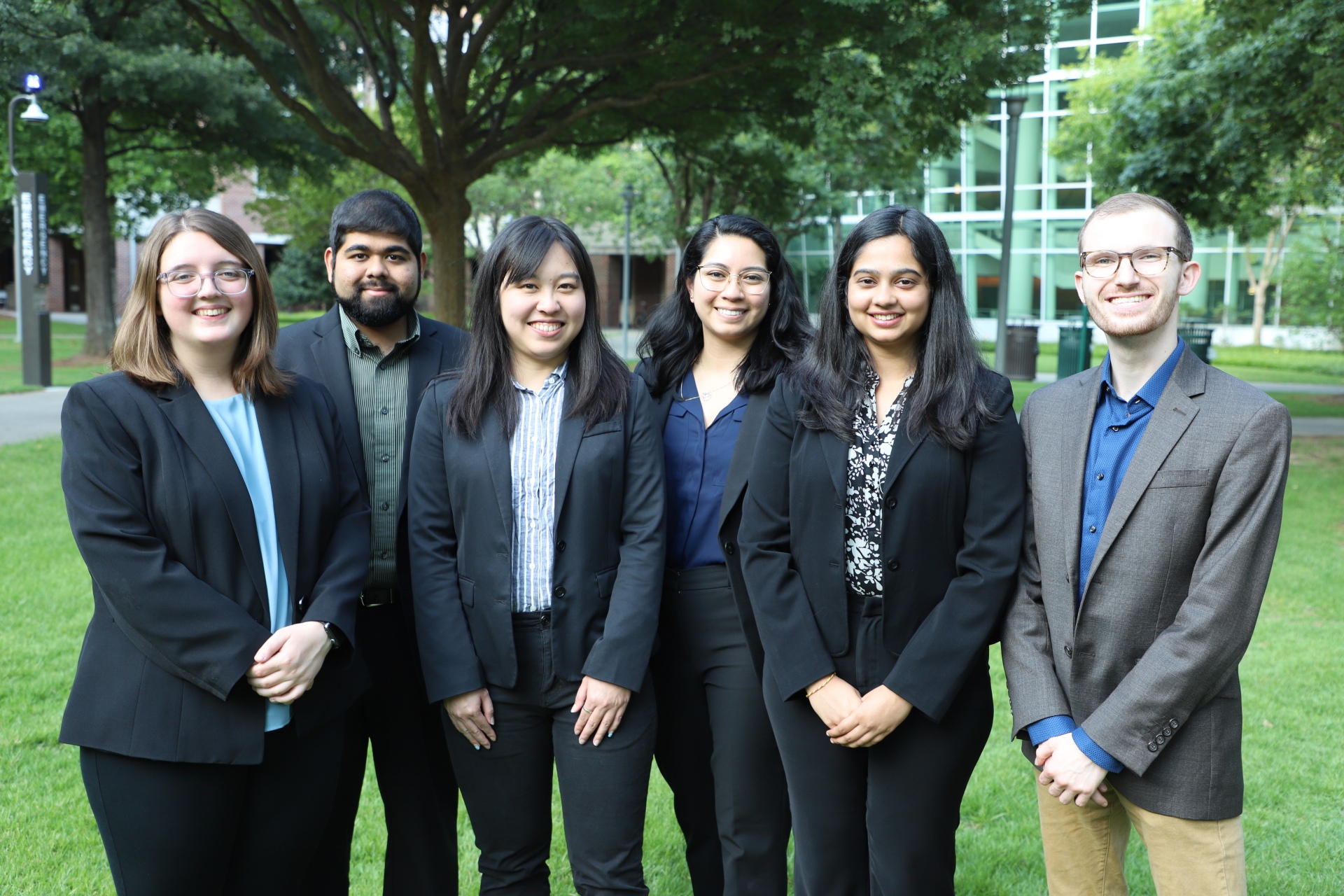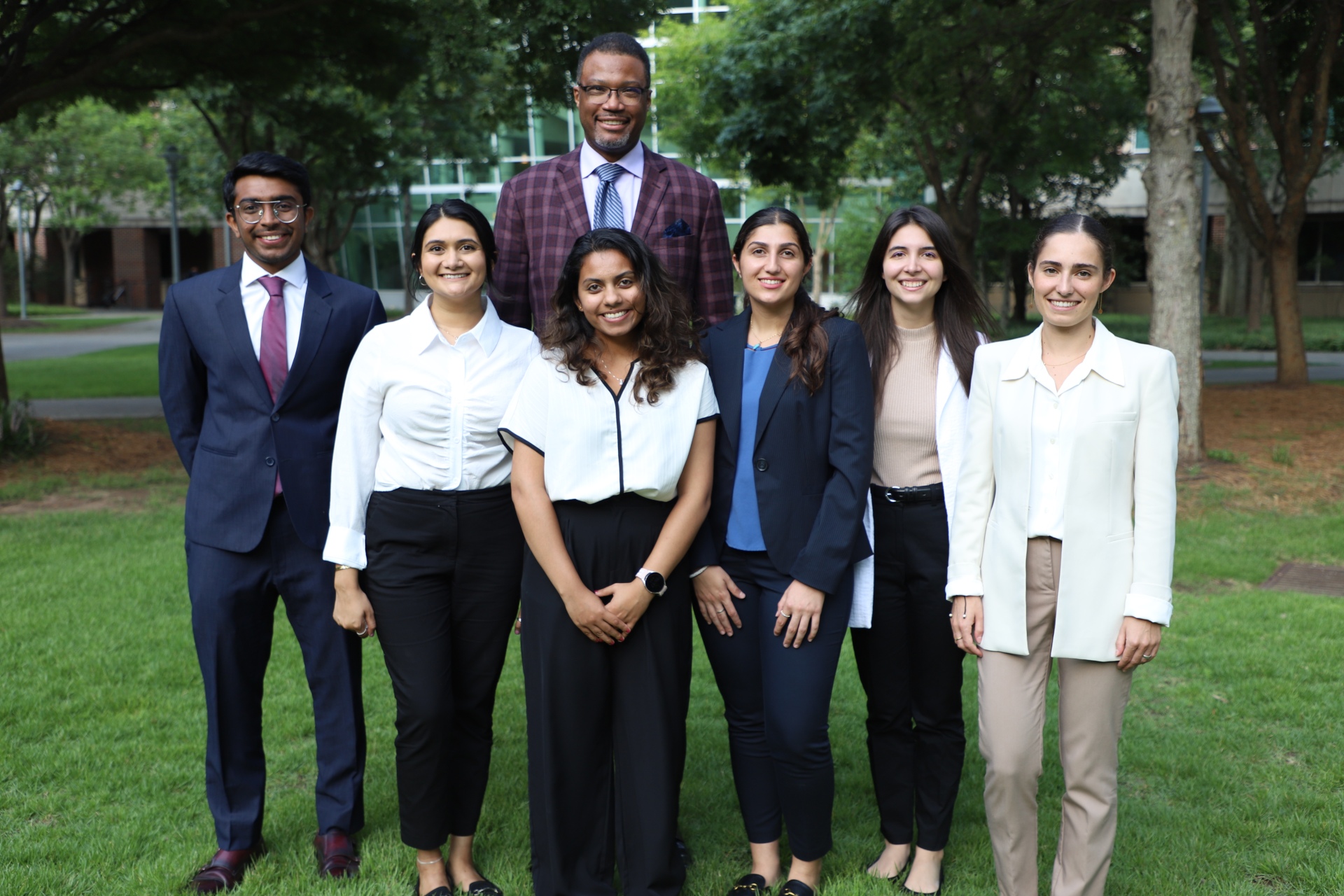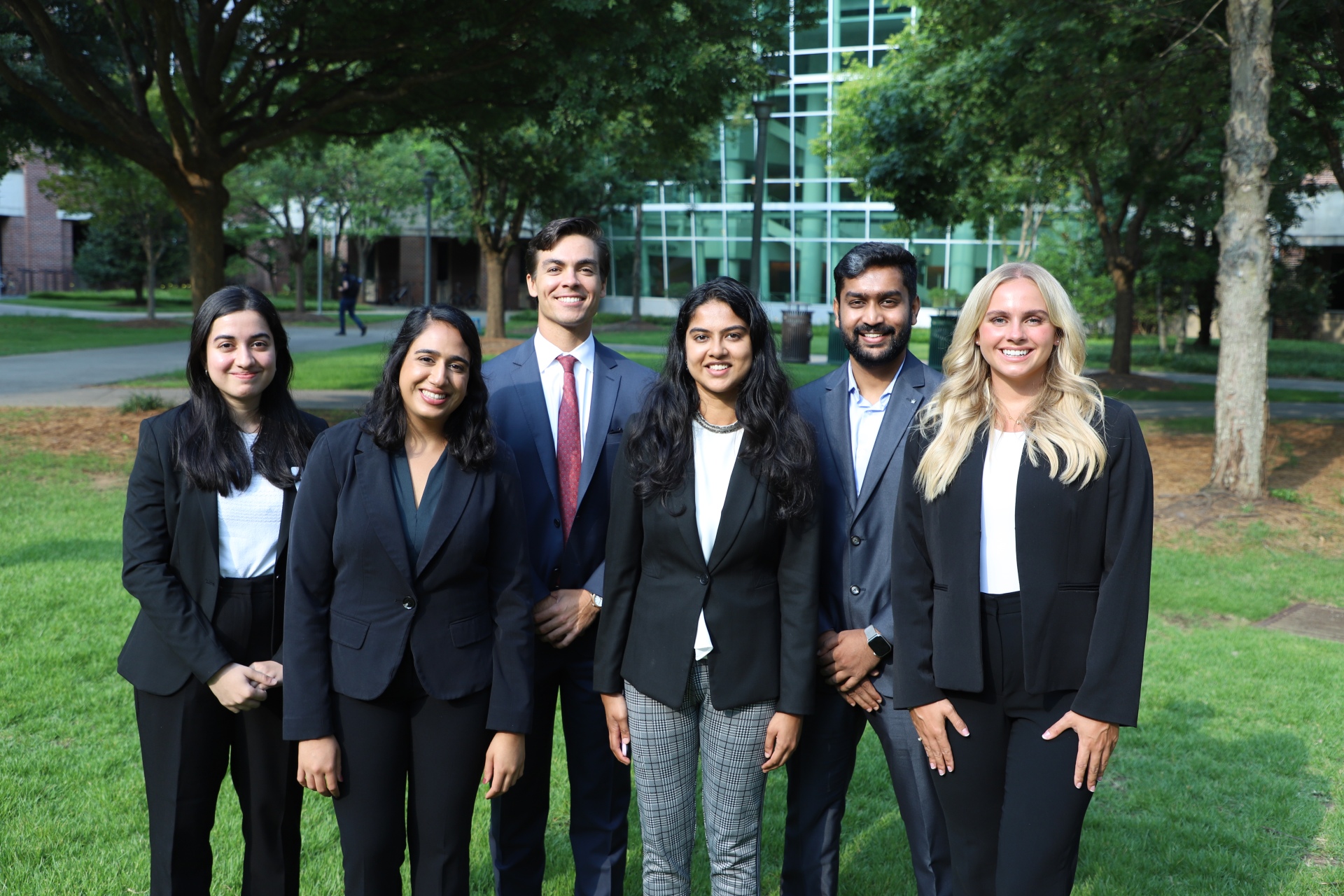Improvements to cardiac care, blood testing, and surgical processes are just some of the solutions presented by the newest class of the Master of Biomedical Innovation and Development (MBID) on July 27.
The cohort completed their studies with final exam presentations of their year-long team projects that address critical healthcare issues. Faculty from the Wallace H. Coulter Department of Biomedical Engineering (BME), medical mentors, clinicians, and representatives from the medical device industry were all in attendance to assess the projects.
“These students defined relevant problems and unmet clinical needs. Then they learned how the puzzle pieces fit together in biomedical innovation and product development,” said Sathya Gourisankar, Ph.D., FAIMBE, professor of the practice MBID program director. “They’ve been given enough exposure to the process to launch their careers and get a foot in the door of industry, where they will continue their development and become experts in their fields.”
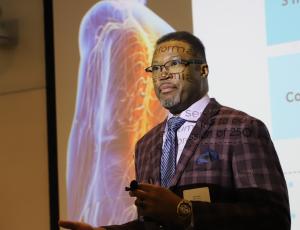
Derek West, MBID student and Neurosure project leader, presents a non-invasive method to monitor and prevent position related nerve injuries during surgery.
The students split into five groups and work alongside medical professionals to gain hands-on experience in the design and commercial development process typical of the medical device industry.
Ideas ranged from an early detection and screening tool to assess heart failure to a surgical stapler that replaces the conventional hand-operated suturing device for septoplasty that can prevent infections and additional surgeries.
“I love the fact that some of the teams are taking on extremely challenging problems with a higher risk,” Gourisankar. “They are encouraged to pursue what they want. We (the faculty) are here to offer our two cents, but it’s up to the students to give a good rationale for what they’ve developed.”
Now in its 10th year, the MBID program has produced 266 graduates, with the 2022-23 cohort being the first to complete all coursework in BME’s U.A. Whitaker Building, according to Gourisankar.
“This cohort had the unique challenge of being the first on Georgia Tech’s main campus since the beginning. And there have been challenged in terms of facilities and resources,” Gourisankar said. “They had 11 months to make things happen, to find a process, to build a relationship and come to the agreement that all the teams need to do well. They showed great ability to be “intrapreneurial,” not just entrepreneurial – intrapreneurial, meaning using the resources within their environment to get the job done.”
View a full photo gallery of the MBID final presentations on Flickr.
2022-23 Masters of Biomedical Innovation and Development Projects
PulseTech
Team: Jose Guzman, JuiCheng (Rick) Hsieh, Sierra Mulrine, Grace Pierson, Jayashree Selvaganapathi, Jillian Wombles
Problem: Heart failure is a complex condition characterized by the heart's inability to pump enough blood to meet the body's demands and it affects millions of people per year worldwide. Early diagnosis is challenging, often resulting in delayed treatment and poor patient outcomes. Existing diagnostic methods, such as echocardiography and blood-based tests, are invasive, expensive, and require specialized equipment or laboratory analysis. Additionally, these methods may not be readily accessible in resource-limited settings or remote areas, leading to disparities in healthcare delivery.
Solution: CardioScreenPro, aims to revolutionize heart failure screening by introducing a non-invasive, cost-effective, and user-friendly approach utilizing lateral flow assay technology. Lateral flow assays are well-established diagnostic tools that provide rapid results. By employing this technology and focusing on the protein NT-proBNP, a well-known biomarker for heart failure, we offer a novel and accessible solution for early detection and screening.
Siren
Team: Ashi Awasthi, David Ward, Harika Nathi, Het Modi, Olivia Brencovich, Rajita Rhaphaela, Rodrigo Silva
Problem: In-vitro hemolysis, or the destruction of red blood cells due to external factors, is a major contributor to delays in patient care and waste of hospital resources in the emergency department (ED). With hemolysis incidence rates in the ED ranging from 7-20% and no available method to detect hemolyzed samples prior to standard laboratory processing, literature suggests that a hemolyzed sample delays patients by an average of 62 minutes and hospital emergency departments lose upwards of $300,000 each year in wasted labor, supplies, and time.
Solution: Our solution provides a method for the point of care detection of in-vitro hemolysis. After extracting a small sample of whole blood from each blood collection tube, our device, through a lateral flow assay, alerts clinicians when results are indicative of hemolysis. If hemolysis is detected, a new sample can be taken immediately, reducing delays present from laboratory processing.
ENTeam
Team: Zafar Alam, Yoel Alperin, Harshita Edwankar, Yin Lu, Marilyn Medallon, Samantha Smith
Problem: The closing step of septoplasty is critical as it must be performed correctly to prevent hematomas, perforations, infections, and potentially revision surgeries. Our device - the proposed device, the ENTeam Septal Stapler, is designed to replace the conventional hand suturing closing process of septoplasty surgeries by providing surgeons with a method to staple the nasal septum and respective mucosal flaps in place. There are an estimated 260,000 annual septoplasties conducted in the United States alone and an additional 882,000 annual surgeries that could potentially benefit from the proposed device. Additionally, the proposed device offers distinct advantages over traditional hand suturing techniques in septal surgery. Unlike hand suturing, which requires manual dexterity and precision, the ENTeam Septal Stapler standardizes and simplifies the process with consistent and effective staples.
Solution: The ENTeam Septal Stapler utilizes a resorbable fixation structure delivered via a hand-operated surgical stapler. The ENTeam fixation structure (staple implants) is composed of a bioresorbable copolymer. The device is indicated for use during nasal surgery for coaptation of the mucoperichondiral flaps of the nasal septum. Aforementioned staples are provided in a sterile cartridge installable into the reusable stapler apparatus prior to use.
NeuroSure
Team: Derek West, Anoushka Vellara, Ammar Khan, Cristina Isusi Silgo, Lauren Connelly, Katherine Zaronias, Rani Kapadia
Problem: During surgeries, patients are often placed in positions that place pressure on nerves. With enough pressure, debilitating nerve injuries can occur, leading to loss of motor or sensory functions. This type of nerve injury has been reported to occur in 1-2.5 million surgeries, making it a significant surgical risk. It costs patients significant time from work and costs hospitals and physicians because of extended hospital stays and malpractice claims. Currently, there are no non-invasive medical devices on the market to monitor and prevent position related nerve injury.
Solution: To answer this unmet need, we have developed NeuroSure. Our device monitors and adjusts patients to alleviate nerve risk injury. Further, the device has a warning signal that alerts the surgical team of increased risk of nerve injury.
Critical Care
Team: Fischer Robinson, Srija Vaidyanathan, Aparna Subramaniam, Ameera Patel, Kaveen Vijay Kumar, Cameron Poulsen
Problem: Intensive care units (ICUs) are specialized units in hospitals designed to care for critically ill patients. Cardiac intensive care units (CICUs) are specifically for patients experiencing heart diseases and lung diseases and transplant patients. As many patients in the CICU have heart and lung dysfunction, cardiopulmonary support is often essential for patient recovery and stability. The gold standard technique for circulation and oxygenation of blood is the life-sustaining machine known as ECMO, or extracorporeal membrane oxygenation. This device pumps blood outside of the body to an artificial lung that facilitates the blood-gas exchange and returns the oxygenated blood to the body. However, ECMO treatment has many complications that can lead to significant health risks; current equipment is notorious for forming blood clots and can require medical providers to splice out the clotted regions in a process called “circuit exchange.” Even this process currently has flaws; it leaves the patient disconnected from ECMO for a period of time and requires up to six providers operating in a tight space at one time.
Solution: CircuLink is a 3-way connector placed in two locations within the ECMO circuit. It would allow the healthcare providers to attach a new pump and oxygenator to the ECMO circuit before having to stop flow on the old pump. When ready to switch over to the new pump, personnel can simply flip the valves and remove the old circuit. This tool would enable the circuit exchange process to happen without disrupting the flow of blood to the patients and it would decrease the number of required personnel.
Contact
Kelly Petty /// Jerry Grillo
Communications
Wallace H. Coulter Department of Biomedical Engineering
Latest BME News
Jo honored for his impact on science and mentorship
The department rises to the top in biomedical engineering programs for undergraduate education.
Commercialization program in Coulter BME announces project teams who will receive support to get their research to market.
Courses in the Wallace H. Coulter Department of Biomedical Engineering are being reformatted to incorporate AI and machine learning so students are prepared for a data-driven biotech sector.
Influenced by her mother's journey in engineering, Sriya Surapaneni hopes to inspire other young women in the field.
Coulter BME Professor Earns Tenure, Eyes Future of Innovation in Health and Medicine
The grant will fund the development of cutting-edge technology that could detect colorectal cancer through a simple breath test
The surgical support device landed Coulter BME its 4th consecutive win for the College of Engineering competition.

